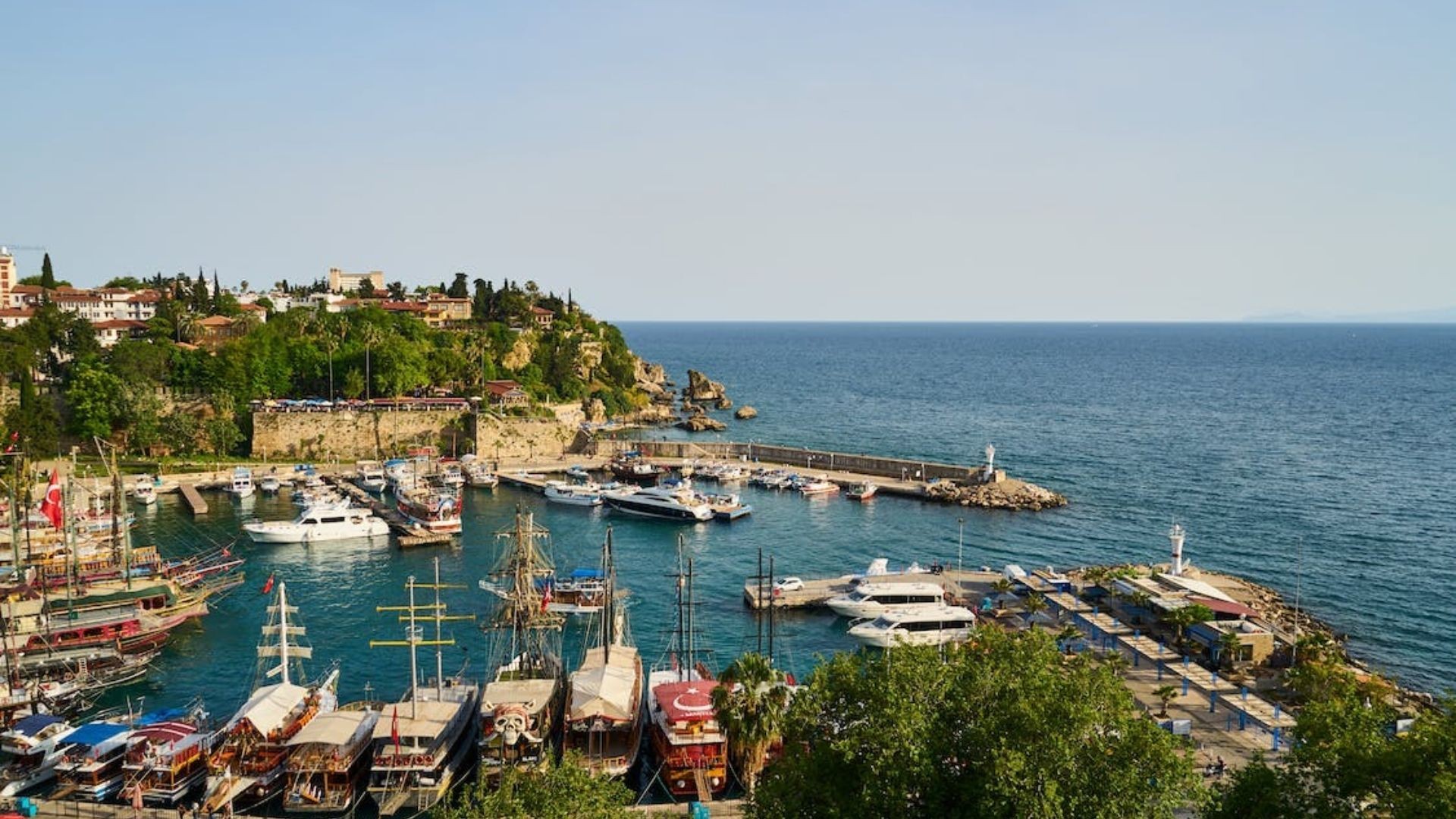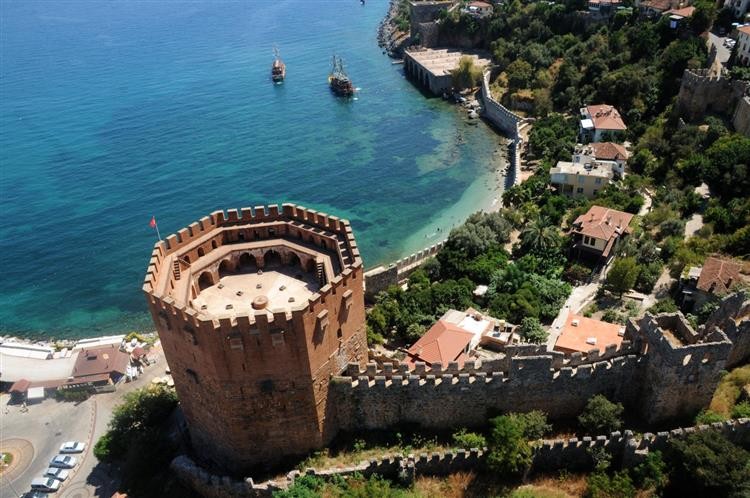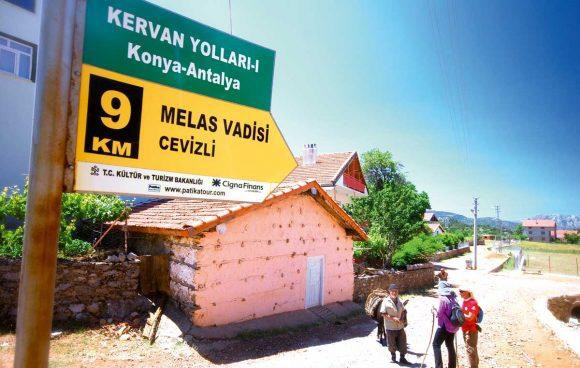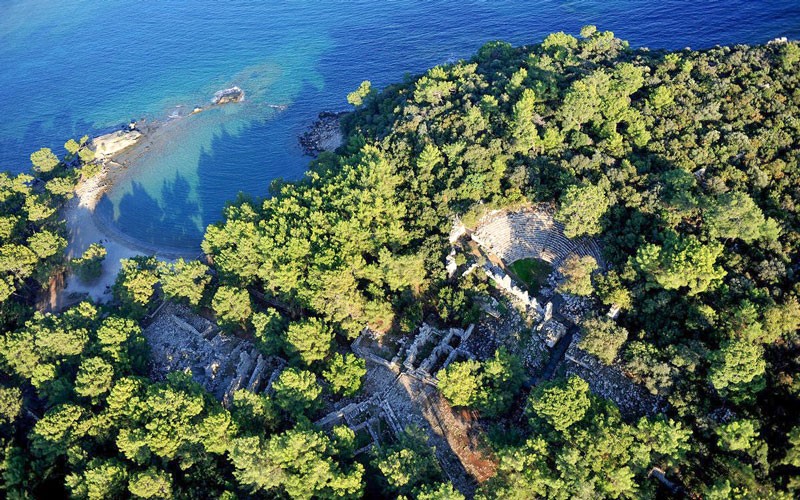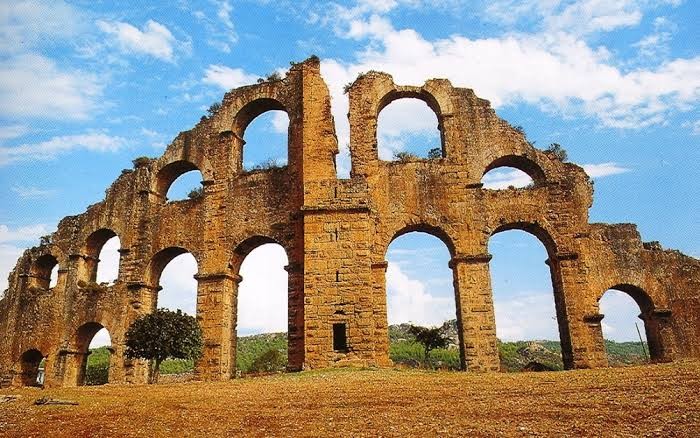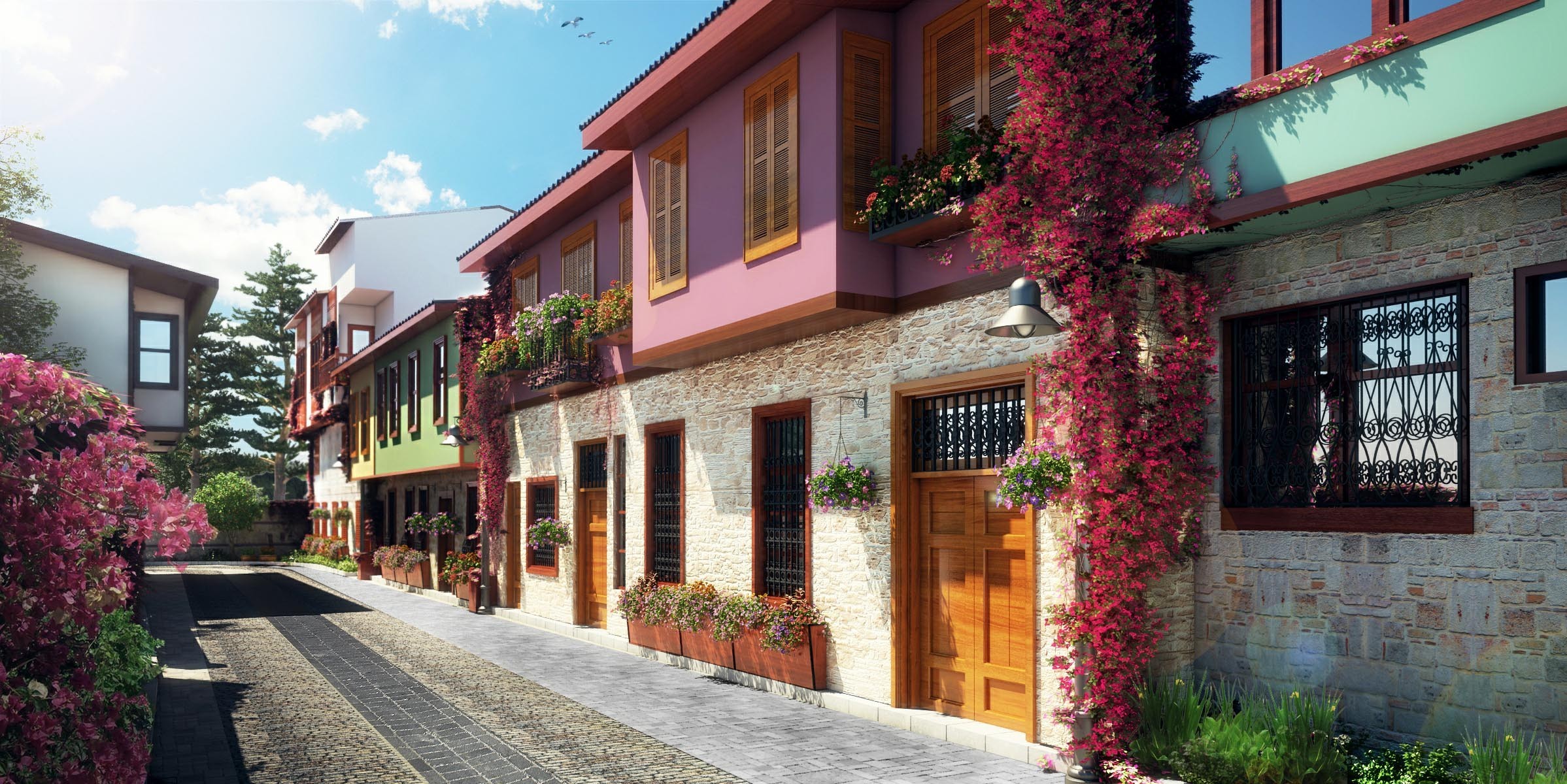The ancient city of Aspendos, approximately 50 kilometers east of Antalya, is one of the big-hitter historic attractions for tourists visiting Turkey's Turquoise Coast region. The site's theater-one of the Roman Empire's greatest remaining pieces of architecture-is the monument everyone is here to see.
7 ancient cities in Antalya that you can visit
Discover Antalya13 January 2020Ancient sites that have survived centuries, or even millennia, haven't fared so well in the 21st century. Here are 7 best ancient cities in Antalya you can visit - destinations that offer glimpses into humanity's past and the ingenuity that people brought to creating wonders without computers or heavy machinery.
Aspendos

Olympos
The ancient site of Olympos lies 73 km southwest of Antalya and is an ancient Lycian-Roman town along the beach, named for nearby Mount Olympos and encompassed within the Olympos National Park.
Historical overview:
The city, founded in the 3th century BCE, was a pilgrimage center for the temple of Hephaestus at nearby Chimaera reachable on a Roman paved road. Olympos was also one of the six leading Lycian League cities. Conditions deteriorated in the 1st century BCE, when pirates under the command of Zenicetes took control of Olympos and nearby Phaselis. The pirates disrupted coastal shipping and kidnapped local residents and travelers for ransom or to sell into slavery. In response in 78 BCE the Roman governor of Cilicia, Publius Servilius Vatia, accompanied by the young Julius Caesar, attacked the pirates and besieged Olympos. To avoid capture, Zenicetes burned up himself and his family. Servilius destroyed Olympos and declared the land of Olympos and Phaselis public property available for resettlement.
Myra
Myra was a leading city of the Lycian Union and surpassed Xanthos in early Byzantine times to become the capital city of Lycia. Its remains are situated about 1.5 km north of today's Demre, on the Kaş-Finike road. Most of the ancient city is now covered by Demre and alluvial silts, for it is located on the river Demre Cay in a fertile alluvial plain. Today this large plain is almost covered with greenhouses stuffed full of tomatoes. In ancient times this area was probably farmed extensively, for export and trade with the interior of Lycia.
The date of Myra's foundation is unknown. There is no literary mention of it before the 1st century BC, when it is said to be one of the six leading cities of the Lycian Union (the other five were Xanthos, Tlos, Pinara, Patara and Olympos). It is believed to date back much further however, as an outer defensive wall has been dated to the 5th century BC.
The city is well known for its amphitheatre (the largest in Lycia) and the plethora of rock-cut tombs carved in the cliff above the theatre.

Patara
Patara was the major naval and trading port of Lycia, located at the mouth of the Xanthos River, until it silted up and turned into a malaria-plagued marsh. It is not far from the sites of Letoon and Xanthos and a day trip from Kalkan, Kaş or Fethiye could easily combine the sites. Beautiful 12 km-long Patara Beach, voted one of the top beaches in the world by Times Online - Best of 2005, is an easy 10-15 minute stroll away from the major ruins at Patara. The Patara area is a national park, a key biodiversity area and is rich in birdlife.
Patara was a very wealthy city due to trade and was one of the six principal cities of Lycia. Patara’s oracle at the renown temple of Apollo (not yet found) was said to rival that at Delphi and the temple equaled the reputation of the famous temple on the island of Delos. It was believed that Apollo lived at Delos during the summer but spent his winters at Patara. Omens were interpreted in these two towns during the respective seasons. A large bust of Apollo, discovered on the hill beyond the City Gate, indicates the existence of an Apollo Temple which has not been yet found.

Perge
Around 1500 B.C. the Hittites settled down in a place we know as Perge. However some people believe that Perge was founded by Mopsus and Calchas in the 13th century B.C.
Invaded by Alexander the Great, much of Perge`s architectural splendor is a living proof of the Hellenistic period. It was soon followed by a prosperous Roman Imperial period for the first three centuries A.D. With the arrival and spread of Christianity, Perge played an important and active role in its expansion.
A slow disintegration of the Roman rule soon followed and the Byzantines occupied Perge. With the end of the Seljuk rule, which followed soon after, Perge was completely ruined and was soon abandoned.
History:
In the twelfth century BC, there was a large wave of Greek migration from northern Anatolia (in modern day Turkey) to the Mediterranean coast. Many settled in the area immediately east of the area of modern-day Antalya, which came to be known as Pamphylia, meaning "land of the tribes". Four great cities eventually rose to promincence in Pamphylia: Perga, Sillyon, Aspendos and Side.
Perga itself was founded in around 1000 BC and is nearly 20km inland. It was sited inland as a defensive measure in order to avoid the pirate bands that terrorized this stretch of the Mediterranean.
In 546 BC, the Achaemenid Persians defeated the local powers and gained control of the region. Two hundred years later, in 333 BC, the armies of Alexander the Great arrived in Perga during his war of conquest against the Persians. The citizens of Perga sent out guides to lead his army into the city.
Alexander's was followed by the diadoch empire of the Seleucids, under whom Perga's most celebrated ancient inhabitant, the mathematician Apollonius (c.262 BC – c.190 BC), lived and worked. Apollonius was a pupil of Archimedes and wrote a series of eight books describing a family of curves known as conic sections, comprising the circle, ellipse, parabola and hyperbola.
Roman rule began in 188 BC, and most of the surviving ruins today date from this period. After the collapse of the Roman Empire, Perga remained inhabited until Seljuk times, before being gradually abandoned.
Perge did not really appear in history until the 4C BC. Because the city was not fortified at the time of Alexander the Great, Perge willingly opened its doors to him. In the Hellenistic period Perge enjoyed rights of minting and considerable freedom under the Pergamene kings. The dominant motif used in art and on coins was Artemis of Perge. Artemis was associated with the Virgin Mary in the Christian period and worshipping her continued. Perge flourished and expanded in the Roman Imperial period during the first three centuries AD.
Phaselis
Phaselis Ancient City is located within the borders of Kemer town in Antalya province. Established by the people of Rhodes in the 7th century BC, Phaselis is also an ancient port city. It has a rich history and is crucial for its ruins.
Phaselis Ancient City, founded in 693 BC, was an important port city in history. This port city has a rich history and is crucial for its ruins, historical amphitheatre, aqueduct, agora and baths.
The remains of the ancient city of Phaselis start at the seashore. The ancient port city is covered with pine and cedar trees and even on the hottest days of summer can be visited in comfort. There is a well preserved theatre which is used for evening performances during the Phaselis Art Days.
Combining history and the sea, Phaselis is an ancient settlement where ancient ruins enrich your holiday experience. You may breathe the historical tissue in Phaselis, which is a must see place.
HISTORY OF PHASELIS
Phaselis joined the Lycian Union and became one of its important cities. With the weakening of the union it fell under the control of pirates as all other port cities. The reign of the pirates in the area ended with the Roman Empire coming to dominate the region. In the Byzantine period it became a bishopric. It retained its importance until the 3rd century AD and declined after that.

Side
Side, situated halfway between Antalya and Alanya, is not only a popular resort on the Mediterranean coast but also a magnificently preserved ancient city. In ancient times it flourished in the slave trade, which contributed to the wealth and power of this settlement. Even if you are not beach bunnies, do not miss out Side as located on the ruins from the Hellenistic and Roman times are a huge tourist attraction, and the local museum, operating in former Roman baths, has many interesting exhibits.
Side was founded in the 7th century BCE by Greek settlers from Kyme in Eolia, a land located in the north-western part of Anatolia. The patron goddess of the town was Athena, whose head was depicted on the coins minted in Side. However, the Greek origins of Side inhabitants were quickly forgotten, and the descendants of Greek colonists took over the language and customs of the local people. That language, examples of which have been discovered on the inscriptions from the 3rd and 2nd centuries BCE, has not yet been understood by researchers. However, it is known, that the name of the city meant pomegranate in the local dialect.
Thanks to its favourable location at the natural harbour Side quickly became one of the most significant settlements in Pamphylia and a trading station of the region. In the 6th century BCE, Side came under the rule of Lydia and later Persia, but little is known about this period of history.

